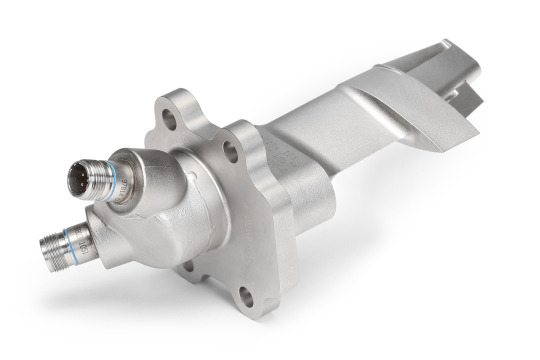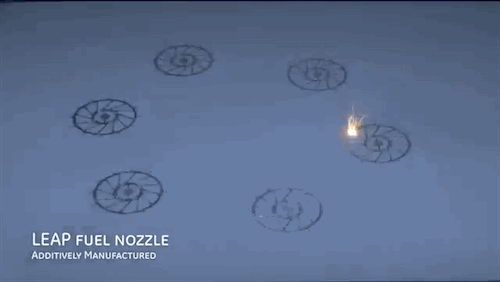By GE Reports staff

The fist-sized piece of silver metal that houses the compressor inlet temperature sensor inside a jet engine is a part that’s bit obscure even for many aviation aficionados. Starting now, however, it’s becoming a symbol of one of the biggest changes sweeping jet engine design.
The housing for the sensor, known as T25, recently became the first 3D-printed part certified by the U.S. Federal Aviation Administration (FAA) to fly inside GE commercial jet engines.
GE Aviation is currently working with Boeing to retrofit more than 400 GE90-94B jet engines – some of the world’s largest and most powerful - with the 3D printed part. The GE90 family of engines powers Boeing’s 777 planes.
But the 3D-printed housing won’t be an outlier for long. GE has already started flight tests with the next-generation LEAP jet engine, which holds 19 3D-printed fuel nozzles. The engine, which will power new narrow-body planes like the Boeing 737MAX and the Airbus A320neo, was developed by CFM International, a 50/50 joint venture between GE Aviation and France’s Safran (Snecma).

Top and above: The 3D-printed housing for the T25 sensor. Located in the inlet to the high-pressure compressor, the sensor provides pressure and temperature measurements for the engine’s control system. Image credit: GE Aviation
GE is also developing 3D-printed fuel nozzles and other parts for the GE9X engine for Boeing’s new 777X aircraft. The GE9X will be the largest jet engine ever built.
Although the LEAP is still in testing and the GE9X in development, CFM has received more than 8,500 orders for the LEAP, and GE has received 700 for the GE9X. GE Aviation’s total backlog now exceeds $135 billion for both equipment and services, and the value of the backlog has grown by a quarter over the last two years alone.

A 3D-printed fuel nozzle for the LEAP. Image credit: CFM International
Both of the engines feature new materials like ceramic matrix composites (CMCs) and carbon-fiber fan blades. But parts made by 3D printing represent perhaps the most attention-grabbing breakthrough.
GE scientists have been experimenting with 3D printing and other “additive manufacturing” methods over the last decade. The company has made several key acquisitions in the space, such as buying Morris Technologies, started by 3D printing pioneer Greg Morris.

The 3 printer shoots a laser or electron beam into a thin layer of cobalt-chrome powder to make the part. Image credit: GE Aviation
Unlike traditional manufacturing methods that mill or cut away material from a metal slab to produce a part, additive manufacturing “grows” components directly from a CAD file using layers of fine metal powder fused together with an electron beam or laser. The method can produce complex parts that would be difficult or even impossible to make otherwise. It creates them in a fraction of the time, compared with traditional methods like machining and welding, and leaves behind little waste.
As a result, additive manufacturing allows engineers to replace complex assemblies with single parts that are lighter than previous designs, saving weight and boosting a jet engine’s fuel efficiency.

Additive manufacturing allows designers to create complex parts like this jet engine combustor, which would be very difficult to make on conventional machines. Image credit: GE Aviation.
The new 3D-printed housing, made from a cobalt-chrome alloy, protects the temperature sensor’s delicate electronics from icing and punitive airflows inside the engine.
It would normally take GE several years to design and prototype this part, but the GE team was able to shave as much as a year from the process. “The 3D printer allowed us to rapidly prototype the part, find the best design and move it quickly to production,” says Bill Millhaem, general manager for the GE90 and GE9X engine programs at GE Aviation. “We got the final design last October, started production, got it FAA certified in February, and will enter service next week. We could never do this using the traditional casting process, which is how the housing is typically made.”
Jonathan Clarke, program manager for the project, says that the team ended up with a faster and simpler design, and superior material properties. “Once we found a workable solution, it went straight to production,” Clarke says. “This technology is a breakthrough.”